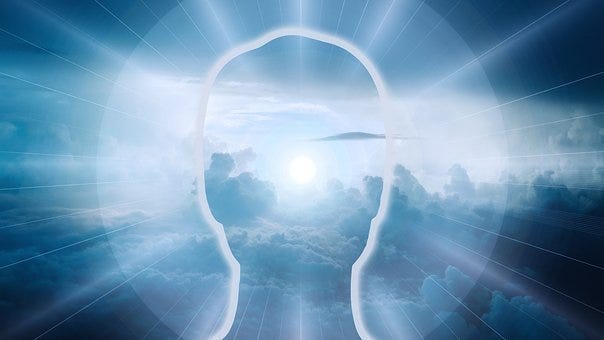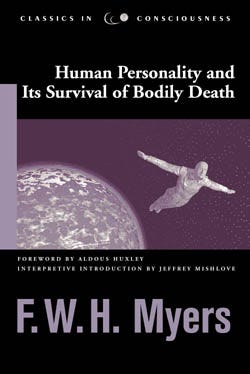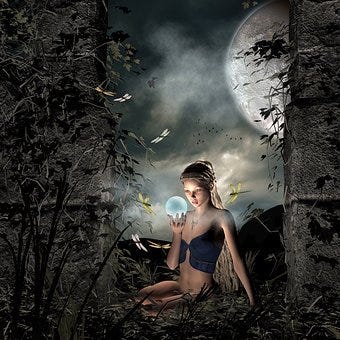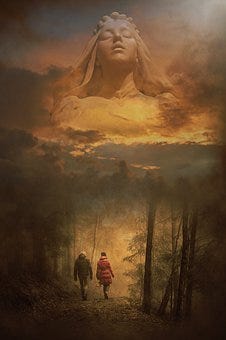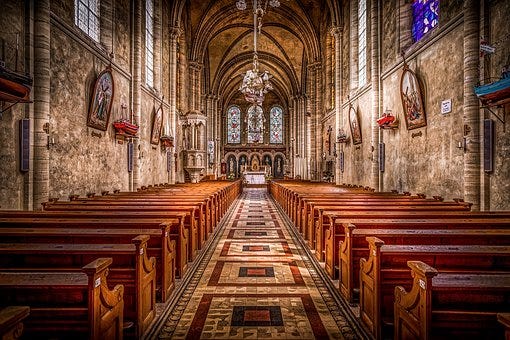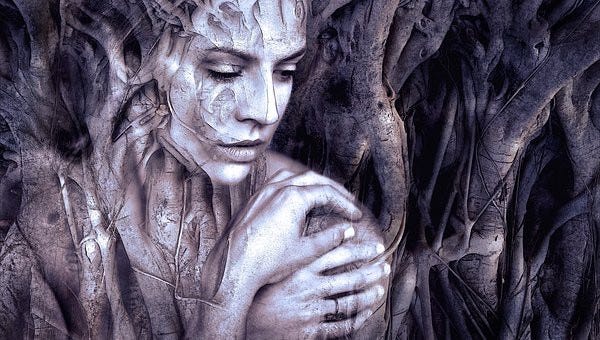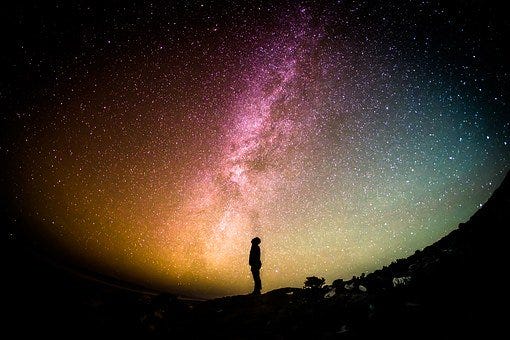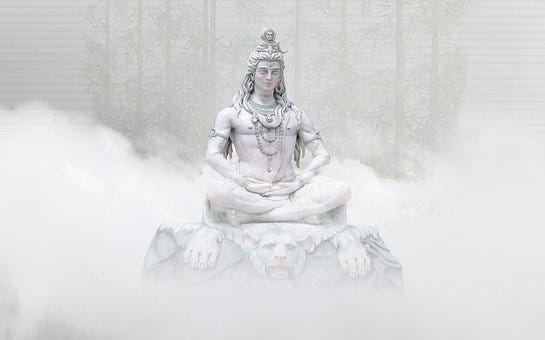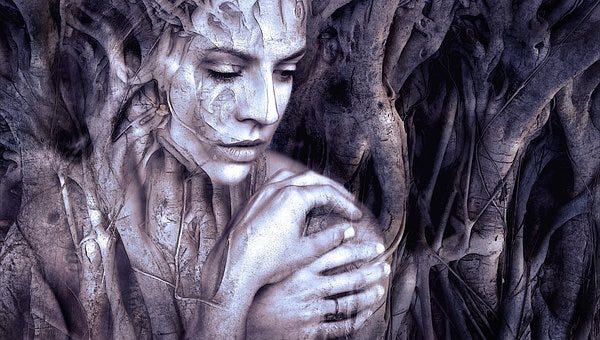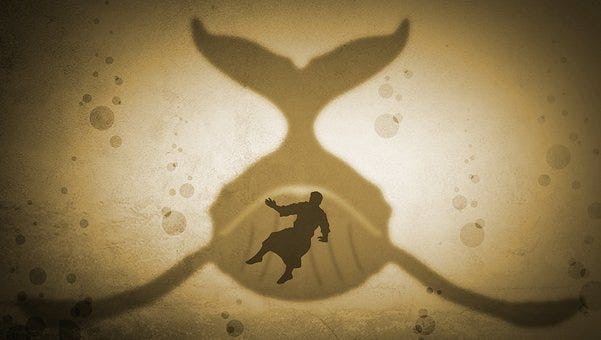
I’ve recently completed a series of articles on the need for a new mythology, a uniting visionary story, a common worldview, which might enable humanity to come together to solve the planet’s problems. (See under Mythology near the bottom of the Blog Index page.) There I outlined what I think would be the appropriate science, the religion and spirituality, and the psychology. The final ingredient would be ancient myths themselves, since they contain many truths and teachings still relevant in modern times. They emerge from a hidden source of wisdom deeper than that of human consciousness. While we are waiting for the new mythological worldview to establish itself, we can therefore immerse ourselves deeply in the old myths. Joseph Campbell spent his life studying them, and his profound writings demonstrate that we should not reject them.
The myths most obviously relevant are the stories of ancient heroes. In order to confront and deal with the problems facing our planet, we will need many heroes. Campbell’s classic book The Hero with a Thousand Faces¹ discusses this theme in detail. Its cover quotes Time magazine: “A Brilliant Examination, through Ancient Hero Myths, of Man’s Eternal Struggle for Identity”.
A simple story of a hero figure would be that of Jonah in the Old Testament. He is given a mission by God to confront the city of Nineveh with its wickedness but, presumably motivated by fear, runs away and escapes on a boat. God then causes a mighty storm which threatens to break up the ship. The crew come to understand that Jonah is the problem, and ask him what they should do. He says that they should throw him overboard, and then the sea will quieten.
Jonah is then swallowed alive by a “large fish”, in modern times interpreted as a whale. He prays and repents, and God causes the fish to spew Jonah “out upon the dry land”. He then goes to Nineveh, and persuades the people and their king to repent from their wickedness, thereby fulfilling his divine task, what we might call his destiny.
What can we learn from this story in modern times? Jonah is on a mission from God; he has work to do to serve the divine. This is true of all of us. In earlier articles I have quoted George Trevelyan, who says that the soul “incarnates for the purpose of acquiring experience in the density of earth matter”. “What occurs in life is not a sequence of chance mishaps, accidents and misfortunes, but a pattern that is, in some mysterious way, planned… Our higher self has somehow chosen its own destiny”2.
There is therefore a purpose for our incarnation (thus the task that ‘God’ has given us); words like destiny, fate are relevant. We can easily lose our way, however, because the soul forgets the plan for its life during the process of incarnation. It is therefore the task of everyone to gradually reawaken, to remember this plan, and implement it. We can see this theme at work in Jonah’s story, for he has indeed lost his way.
He is unusual, however; not everyone knows that they are running away, because they remain unconscious. Jonah knows, however; he has been made aware of his mission. He might therefore be committing what Jesus later calls the blasphemy/sin against the Holy Spirit which will not be forgiven3.
As the text says, however, he had “lain down, and was fast asleep” (1.5). Sleep is one of the most common symbols in myths and fairy-tales, ironically referring to the state of being awake, but nevertheless unconscious, lacking self-awareness, refusing to wake up spiritually. This idea was obviously the inspiration for Bach’s cantata BWV 140, known as Sleepers Awake (Wake up, the voice calls to us — Wachet auf, ruft uns die Stimme).
There are probably some Christians who believe that this story actually happened as recorded, since they believe in the literal interpretation of the Bible. It should be obvious to most people, however, that the story as presented is a myth. If there ever was a historical figure Jonah who preached to Nineveh, then his story has been interpreted mythologically.
In the language of symbolism the sea or waters represent the psyche or, in modern terminology, the Unconscious, and the earth, or dry land, represents the material world. This is apparent in Genesis chapter 1 where God says “Let the waters under the sky be gathered together into one place, and let the dry land appear” (v9), meaning that matter emerges from a less solid, more fluid level of reality. The author of Jonah actually reminds us of that verse of Genesis, for Jonah is made to say: “I worship the Lord, the God of heaven, who made the sea and the dry land” (1.9). This tells us that the story is really about the relationship between ego-consciousness, which inhabits the material world, and the unconscious psyche.
The large fish/whale is therefore a content, or inhabitant, of the collective unconscious. Because it “swallows up” Jonah, it is not hard to recognise this as the archetype of the devouring mother. It is one of the roles of mothers to provide safety, security, complete protection at all times for their children. Because it is the adult hero’s function to be bold, accept difficult and dangerous challenges, in other words to be heroic, the mother’s instincts will react against this and and seek to protect and shelter her child, which prevents him or her from growing up. Although this is well-intentioned, it is ultimately destructive, because the hero is now prevented from fulfilling his or her destiny.
This is how the Jungian writer Erich Neumann describes the phenomenon:
-
“There are situations in which the role of the Archetypal Feminine is more actively negative. Then it uses the ‘withdrawal of love’ as an instrument of power, as a means of perpetuating the rule of the Great Mother, of preventing her offspring from achieving independence. At this point, rejection and deprivation change into the clinging and even ensnaring that we have encountered as negative functions of the elementary character”.
-
“In the clinging, ensnaring function of the woman we already discern a will to release nothing from her dominion, but in the function of diminution and devouring this will is still stronger and is seen to be aggressively negative”.
-
the Terrible Mother’s “devouring-ensnaring function, in which she draws the life of the individual back into herself”4.
Jonah’s refusal through fear to carry out his heroic task shows that he has succumbed to the protecting and consuming influence of the devouring mother. This is still a problem in modern times. Psychotherapists call this a mother complex, a failure to separate in a psychological sense, which often leads to severe mental problems. That is why in various hero-myths the journey begins with the hero leaving the mother, an outstanding example of which would be the story of Theseus.
Tribal societies seem to have a deep psychological understanding of this problem, because they have elaborate initiation rites, the purpose of which for boys is to achieve separation from the mother, and attain to psychological manhood. This sometimes requires tests of great bravery, thus heroism. For example, an initiation task in the Masai tribe is to kill a lion with a spear.
Western societies seem to have lost touch with such ideas; we do not have meaningful initiations in our education systems (and we wonder why so many young people complain of ‘mental health’ issues). If we did, we might be spared problems of the type Jonah encountered. Let us all seek to discover and achieve the mission for which we were incarnated, bring true meaning to our lives, and maybe as a by-product save our civilisation from the disastrous course on which it now seems set.

================================================================================================
Footnotes:
1. Fontana Press, 1993
2. A Vision of the Aquarian Age: the Emerging Spiritual Worldview, 1977, later edition Gateway Books, 1994, p8, p12–13
3. see Matthew 12.31–32
4. The Great Mother, Routledge, 1996, p68, p69, p71


